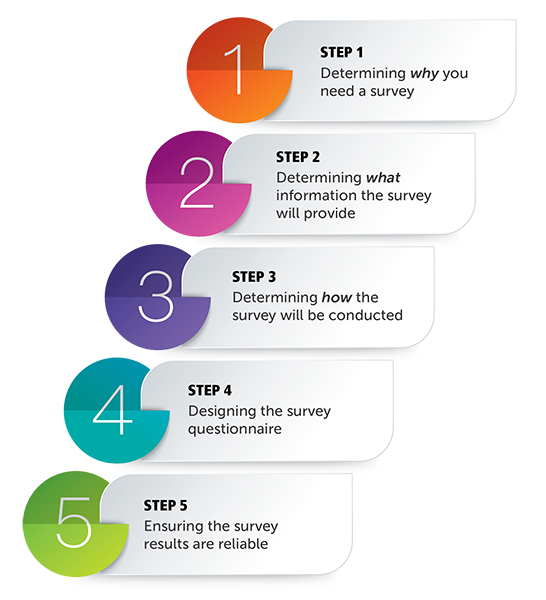September 18, 2020

Introduction
Opinion survey results can add a powerful element to a performance audit report. When carefully designed and correctly administered, a survey can provide valuable insights and supplement audit findings.
This article defines what a survey is and discusses why and how to use surveys in a performance audit. It presents five key steps to consider when conducting opinion surveys and highlights several factors that auditors should keep in mind when designing surveys and using their results.
Auditors will also find further practical information about conducting surveys and the pitfalls to avoid in the companion Audit Tips edition 7 Tips for Conducting a Survey in a Performance Audit.
What is a survey?
A survey is a systematic and rigorous research technique to collect data from a specific population. It does this through a series of questions structured to uncover the perspectives, opinions, or experiences of the individuals in the selected population.
In a performance audit, a survey is most often used to investigate the opinions of a specified population (for example, program clients) in order to assess the effectiveness of, or satisfaction with, a government service, process, or practice. A survey can also be used to test whether management assertions are accurate (for example, if management asserts that, because a program did not receive any complaints, its clients are satisfied).
Both qualitative and quantitative surveys can be conducted during a performance audit, using a variety of methods, including:
- a mailed questionnaire,
- an Internet-based questionnaire,
- a group-administered questionnaire (often done via electronic voting),
- a telephone questionnaire or interview,
- an in-person interview using a structured approach (underpinned by a questionnaire), or
- a focus group.
About the Author

Based on her academic and professional experience in conducting research surveys, Maria Capozzi was hired by the Office of the Auditor General of Manitoba on a three-month contract to conduct the Office’s first board governance survey in 1998. That contract resulted in a 22-year career with the Office, where Maria currently leads the Governance Practice.
Maria holds a master’s degree in Public Administration, an ICD.D designation for corporate directors, and is a Certified Government Auditing Professional.
Contact the author at:
Each of these approaches has its own strengths and challenges, and more than one method may be used within the same audit. Deciding which method(s) to use in a specific audit will depend on several factors, including the amount of time and resources that can be devoted to the survey.
How can surveys be useful in a performance audit?
When opinion surveys are done right, they provide reliable and powerful results, which can enhance a performance audit report and strengthen its recommendations.
Because survey results reflect the opinions of the direct users of government programs and services, or of a project’s stakeholders, they send an authoritative message to auditees that is difficult to dispute. This is especially useful for auditors when measuring subjective factors such as satisfaction, quality, or preferences. For example, when assessing the quality of government’s relationship with boards of directors in the public sector, the board members themselves stating that the relationship needs strengthening is much more powerful than an auditor’s opinion that an improved relationship is required.
How are surveys used in a performance audit?
Conducting a survey within a performance audit is not as simple as it may seem in an ad for a “free” online survey tool. Obtaining survey results that are valid and reportable requires a significant investment of time and effort by auditors. Numerous complications can arise in the process, from challenges in identifying the correct population group to survey and/or accessing accurate contact information for each individual, to dealing with unexpected or incomplete results.
Because conducting an ill-conceived survey can waste precious time and resources, it is very important that auditors carefully consider why they need to conduct a survey and how its results will be used.
The remainder of this article highlights five key steps to consider in the survey process (Figure 1). Thinking through each step will help auditors decide whether a survey is right for their audit and, if so, how they should conduct it.
Figure 1 – Five Key Steps to Consider When Using a Survey in a Performance Audit
|
Page 1 of 2
- 1
- 2



